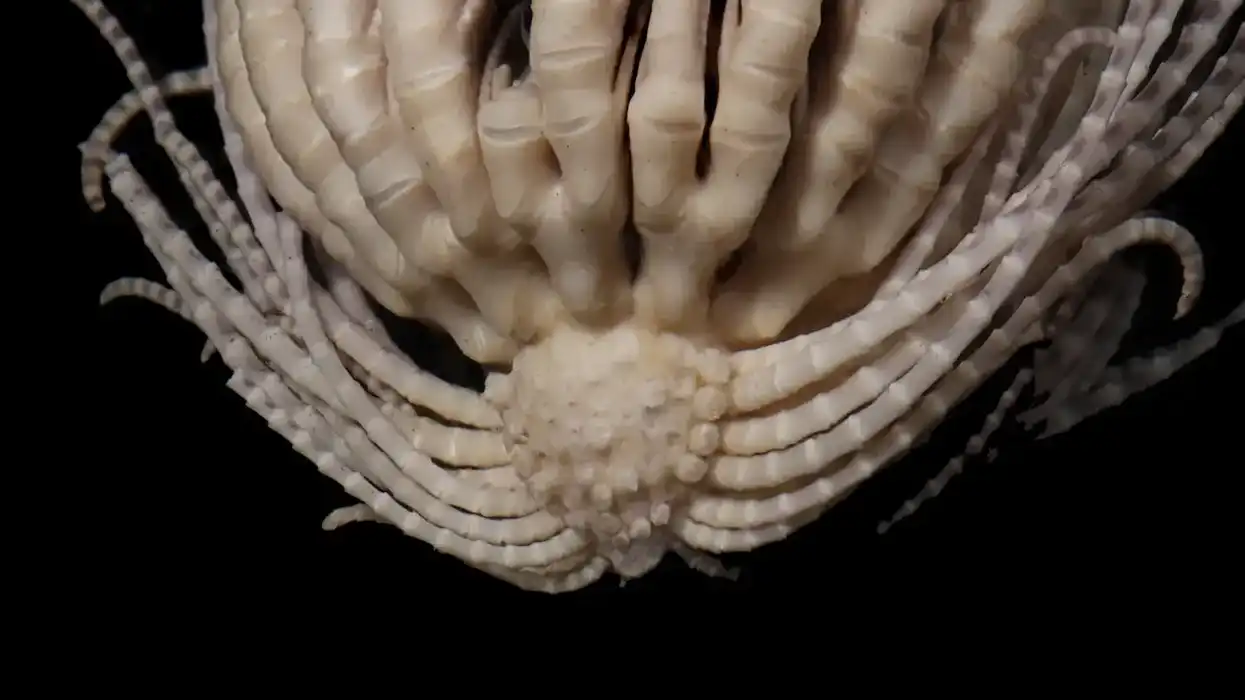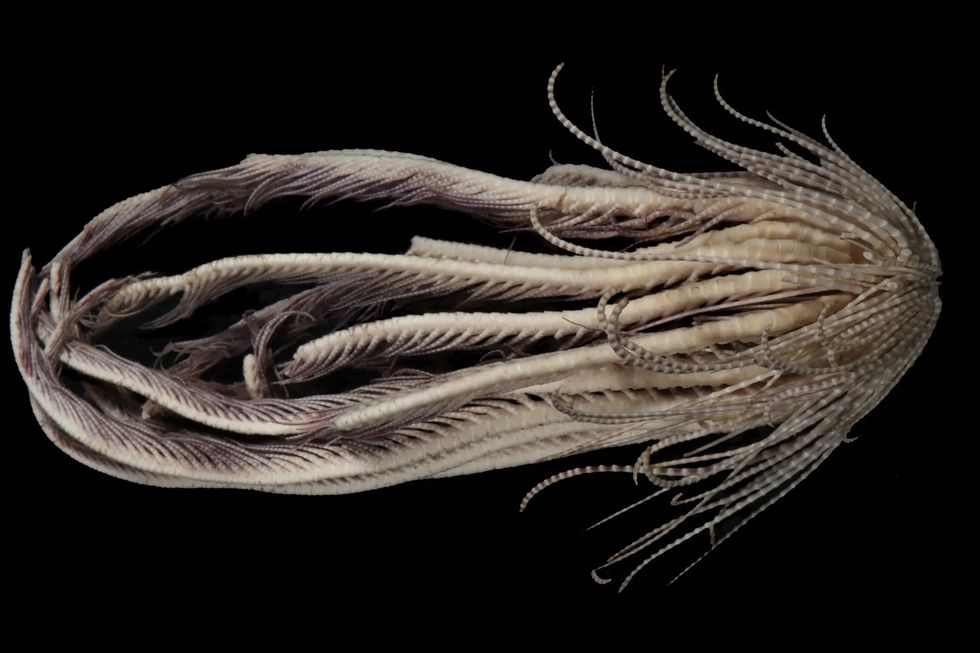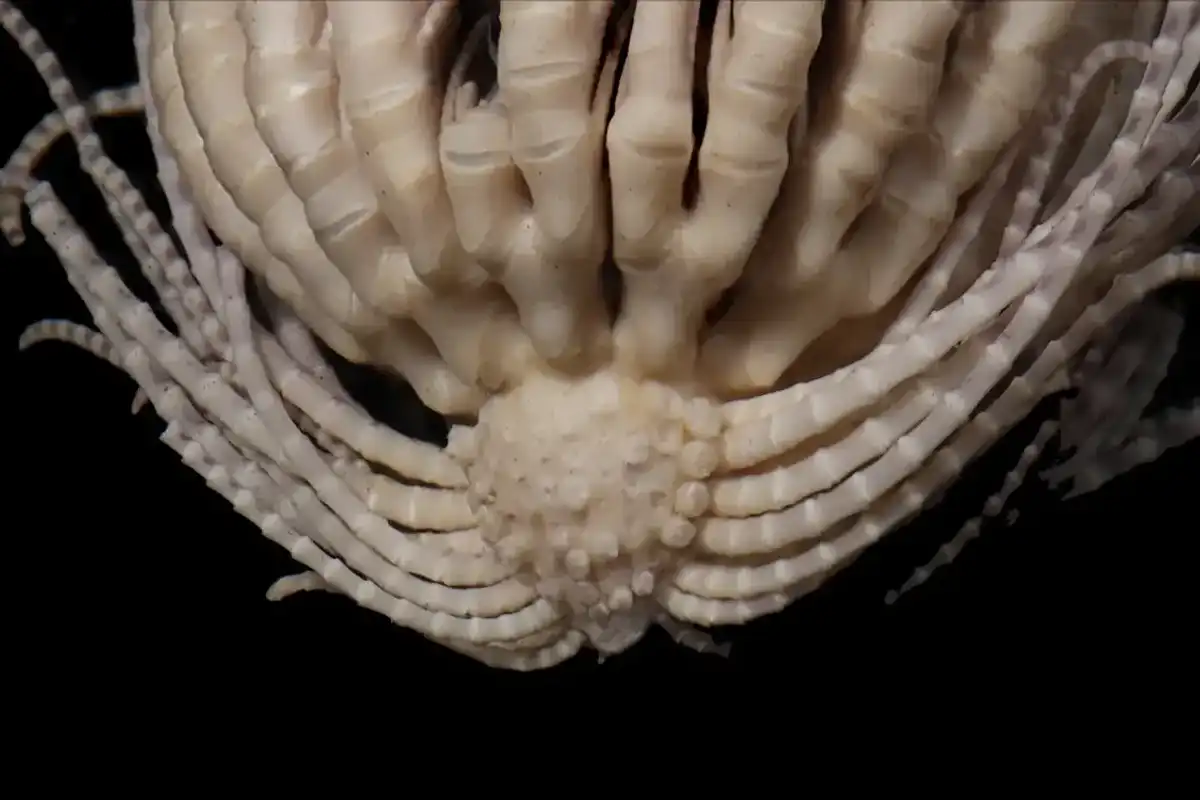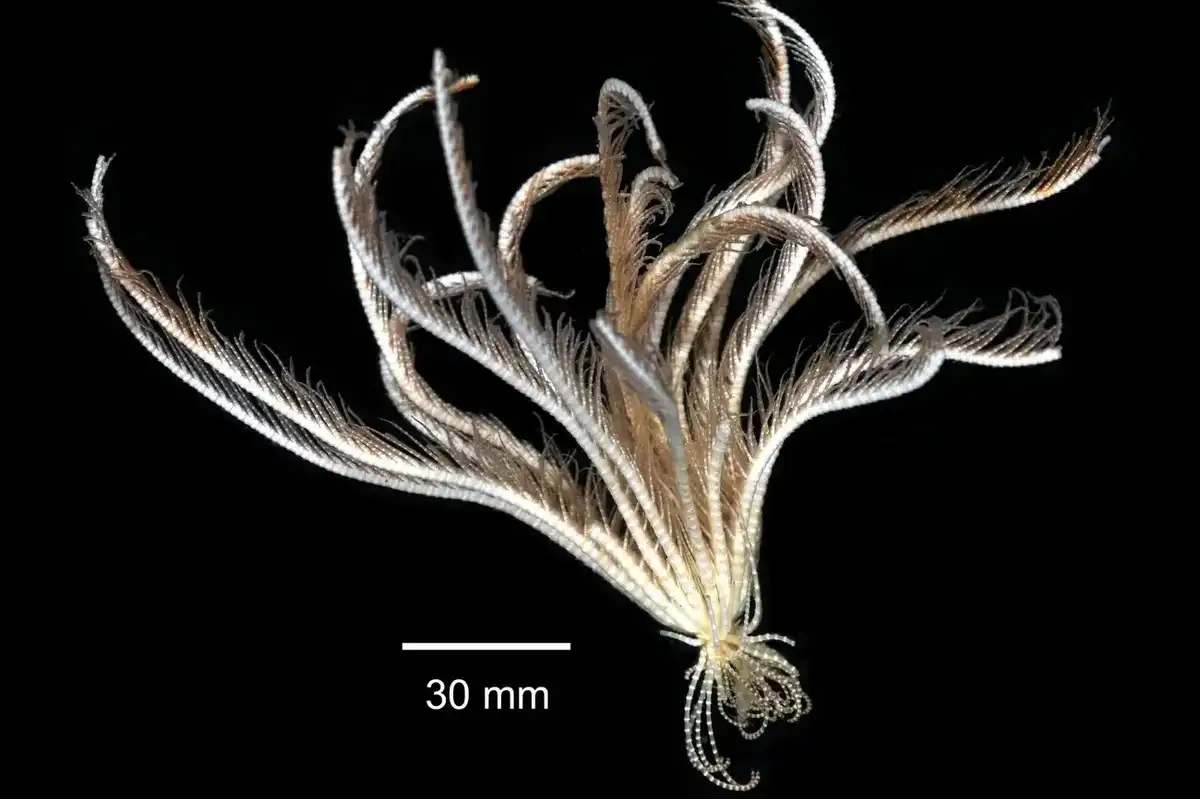Harriet Brewis
Aug 14, 2023

The Antarctic strawberry feather star doesn't necessarily evoke thoughts of luscious summer fruit
Courtesy Greg W. Rouse/Business Insider
Our oceans are alien worlds, full of unsolved mysteries and sci-fi-worthy creatures.
It should, therefore, come as no shock that scientists have just discovered a brand new monster lurking deep beneath the waves.
The creature, which was found between 215 feet (66m) and 3,840 feet (1,170m) below the surface of the sea near Antarctica, has 20 so-called “arms”, which are bumpy and covered in what look like feathers.
On its underside, it has tentacles with tiny little claws at the end, which help it grip onto the sea floor.
Sign up for our free Indy100 weekly newsletter
You may assume this Thalassophobic’s nightmare would be given a suitably unappetising name. But, in fact, its discoverers have made it sound quite… sweet.
They opted to christen their find the “Antarctic strawberry feather star”, for reasons which may not be immediately apparent but which were subsequently explained in detail by one of the brains behind the moniker.
Greg Rouse, a marine biology professor at the University of California, San Diego, who co-authored a paper on the new species, told Business Insider that the name was a nod to the shape of the creature’s body.
What body? You might ask, if you stare at the mass of spindles. But, look closer, and you’ll notice a tiny centre at the end of all those arms.

Once you remove the smaller tentacle-like strings, called cirri, from this base, you can see that the shape looks similar to that of the summer fruit.
"We've taken away a bunch of the cirri so you can see the parts that they're attached to, and that's what looks like a strawberry," he pointed out to the site.
Rouse also noted that the longer, feathery parts of the Antarctic strawberry feather star typically spread out and help the deepsea-dweller to move around.

The formal name of the newfound species is Promachocrinus fragarius. It is classed among the Crinoidea family, which includes starfish, sea urchins, and sea cucumbers.
The “fragarius” part of the title derives from the Latin word "fragum," meaning strawberry, according to Rouse and his fellow researchers Emily McLaughlin and Nerid Wilson, who published their findings in Invertebrate Systematics last month.
And however special it might be, Rouse explained to Insider that their otherworldly-looking friend isn’t the only Antarctic feather star on the block.
Originally, only one species fell into the Antarctic feather star group — the Promachocrinus kerguelensis – but he and his team have now identified four more, including the strawberry.

Their fruity new find, which measures up to eight inches (20cm) long, stands out thanks to its exceptional number of arms.
"A majority of feather stars have 10 arms," Rouse said.
He also acknowledged that, on the whole, finding new species isn’t rare. His lab at the Scripps Institution of Oceanography alone names up to 15 a year.
"We find many species,” he admitted. “The problem is the amount of work that goes into actually naming them.”
Have your say in our news democracy. Click the upvote icon at the top of the page to help raise this article through the indy100 rankings.
Top 100
The Conversation (0)













